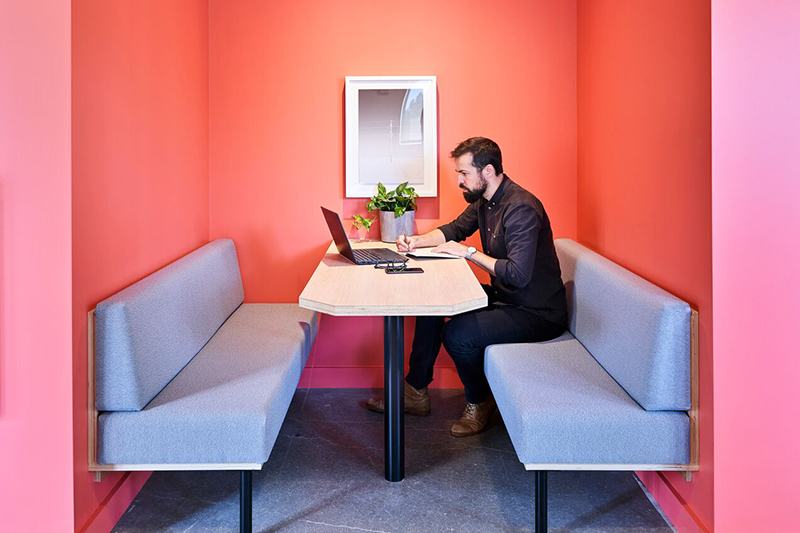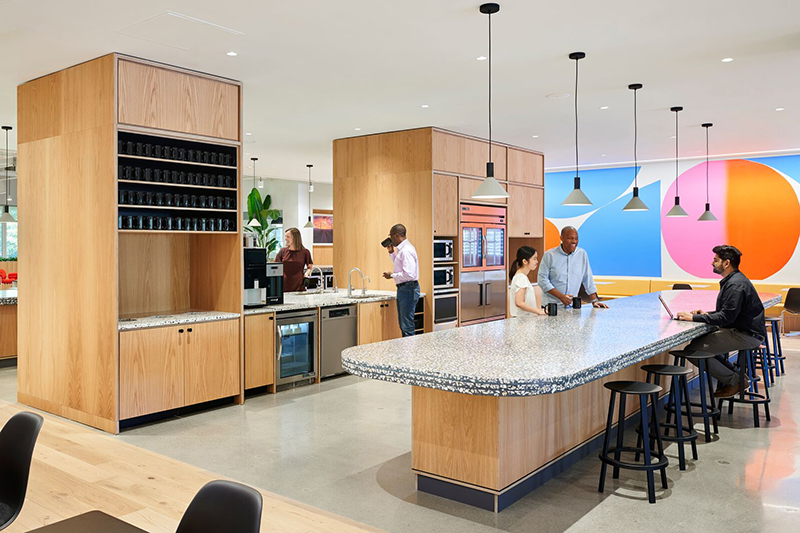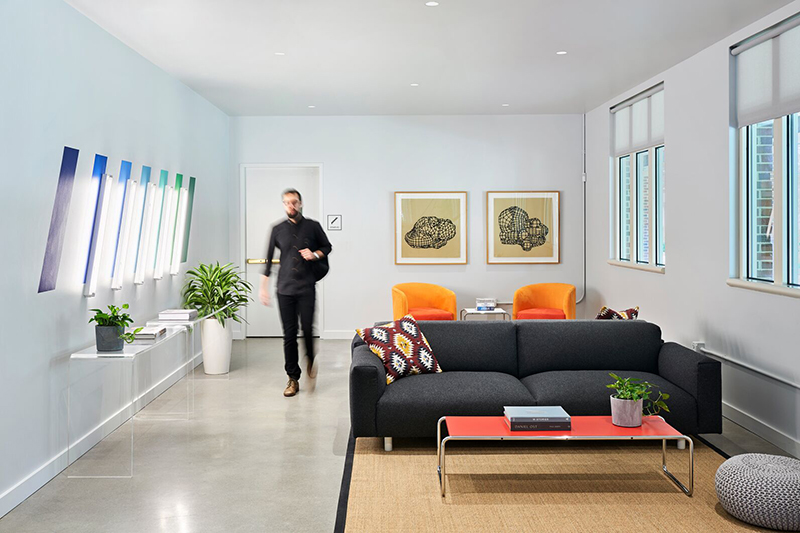Around the world, companies of all sizes find space to succeed at WeWork. Our case studies share their unique stories.
The challenge: an outdated workspace disconnected from company culture
As an innovator in the high-tech, fast-paced, and ever-changing wireless industry, Sprint is in the business of creating connections. But while Sprint’s business continually evolved, their campus headquarters in Overland Park, Kansas, had not.
“Our old space did not facilitate collaboration,” says Deeanne King, chief human resources officer at Sprint. “The environment that we worked in for 20 years hadn’t changed nearly enough to keep pace with our business.”
Sprint’s ability to remain competitive relies on being able to recruit talented employees. As such, the company had lofty hiring and retention goals.
“Kansas City is a highly competitive market,” says King. “There are a lot of high-end employers here and we need to attract and keep talent.”
Sprint knew it would be challenging to meet their goals with their current offices, so King set out to modernize Sprint’s outdated workspace to inspire new energy, lift employee engagement, and appeal to future employees.
The solution: an upgraded space that’s dialed into the employee experience
Sprint chose to transform 6200 Sprint Parkway, the central building on their campus. Their goal was to rethink the 156,000-square-foot-space so it felt as comfortable and welcoming as a home, but with the energy and amenities of a vibrant, modern workspace.
“The culture here is really about family,” says King. “We sought to create a space where people feel connected to the business, learn from each other, and grow professionally.”
To achieve that, Sprint partnered with WeWork for the design and buildout.
“WeWork forced us to think about space very differently—and not just physical space, but the experiences you can create in those spaces,” King said. “This helped us understand our real challenges, opportunities, and possible solutions.”




In June 2019, more than 1,100 Sprint employees moved into the completely renovated building. The space now has open floor plans that are conducive to collaboration. There are also quiet nooks where employees can lean into solo work. The décor reflects local culture and celebrates the unique spirit of Kansas City.
“WeWork listened and incorporated touches that are important to the people here in Kansas City,” King said. “One of my favorite features in this space is the Western Auto sign. For people who live here, it’s an icon.”
The results: improved collaboration among current employees and a strong signal for future talent
All the benefits King sought for engagement, collaboration, and, ultimately productivity, are coming to fruition, showing how a renewed space can refresh the company culture and inspire employees to engage.
“This space and the experiences we’re creating here really encourage people to do their best work,” King says. She notes that the WeWork community team helped welcome employees into the space and ensures that they’re happy, productive, and thriving.
Beyond fostering a vibrant and energetic place for the existing workforce, King also has an eye on attracting future, young innovators.
“We had a goal to hire 50 percent of our interns, and I think we’ll easily achieve that,” King says. “They’re excited about the experiences they’ve had, but also about the space. It’s phenomenal.”

With WeWork, Sprint has been able to approach their workspace as an asset to enable company culture and employee engagement.
“As I got into this and had conversations with WeWork, I realized this is so much more than a real estate project,” King says. “It’s about creating an employee experience.”
Key highlights
- Upgraded 156,000 square feet in a 20-year-old outdated office into a modern, open workspace
- Re-energized the culture and improved employee engagement
- Enhanced productivity, connectivity, collaboration, and innovation
- Created a future-forward workspace to attract new talent in a competitive market
WeWork offers companies of all sizes space solutions that help solve their biggest business challenges.







